Living with Autism – 4
October 26, 2012
Other Possible Sources of Mercury
We cannot honestly discount other sources of mercury. One well-known source is fish, especially larger fish, such as long-lived tuna, swordfish, king mackerel, shark and tilefish, because they are at the top of the food chain. They tend to absorb more mercury because they live longer and feed on smaller fish. The U. S. FDA standards consider fish safe if it contains less than 1 ppm (part per million) of methyl mercury. Canada’s standard is less than 0.5 ppm. Safer fish to eat are line-caught salmon, flounder, sole, sardines, shrimp, scallops (except from Mid-Atlantic), and oysters. I would recommend that women of childbearing age, pregnant or lactating, avoid eating fish more than once a week.
Another source of leaching mercury is dental fillings. If you need dental work done, please make sure that no mercury-containing silver fillings are used. If you need to have them taken out for the safety of your coming child, do it at least 6 months before pregnancy to avoid the possibility that the leaching mercury will affect your unborn child. Heavy metal toxicity is suspected to be one the major sources of DNA susceptibility to autism in recent years.
Before 1991 mercury was used as an anti-fungal in paint. Due to demonstrated toxicity, it was taken off the market. Unfortunately, a lot of older houses were painted with this toxic material. As in lead toxicity, children may ingest these poisons through accidental ingestion. Before you buy an older house, you may want it properly inspected for this potential danger.
When Sander was born, he was almost nine pounds, happy, healthy, and amazingly strong. By the time he was two months old he was almost sleeping through the night — miraculous after our first one!
I talked to the doctor about vaccinations. I was worried because allergies run in our family and I wanted to delay some of the shots. Fine, the pediatrician said. He has to have at least the DTaP — Diphtheria, Pertussis and Tetanus.
So I got the shot and left.
The child didn’t sleep again for two years. Neither did I.
Within a couple of hours, I knew I’d made a huge mistake.
Huge.
Sander started screaming, and didn’t stop. Cried that entire night, and the next day, and the next. Started arching his head back like he was in pain, spitting out milk. Had weird, hard, rabbit poop, or black tar, or no poop at all. In the next three weeks, I was at the doctor’s office five times.
I got:
“He’s teething. He has an ear infection. Maybe it’s colic. He’s fine. You need to stop worrying. And no, there’s no way it could be connected to the vaccine. Besides, that was a week ago!”
So.
I had a baby who was a sobbing, miserable mess, and he was obviously in pain. The doctors honestly didn’t have a clue, and they didn’t listen to me. I absolutely KNEW, from that day forward, that something was WRONG.
I went to a lactation consultant. “Maybe you’re making too much milk.”
Tried another one. “Maybe he has digestion issues.”
Finally I went to an “alternative” doctor who gave me all sorts of weird herbs and supplements to take, since I was still nursing Sander. I took them, and within about three hours (warning: poop talk ahead) he had a diaper full of the nastiest, smelliest slime and black goop that you’ve ever seen. It looked like his guts just slid out of him. And within twenty minutes of that, he stopped crying for the first time in three weeks. And he went to sleep.
Well, that was that, I thought. Done. He had a bad reaction to the vaccine, the alternative doctor fixed me up, and the baby was going to be all right.
Except he wasn’t.
He stopped crying, but he wasn’t happy. Ever. He was as serious and miserable a little guy as you could ever imagine. Hit every milestone early, and I kid you not, walked at ten months. By one year old, he was climbing the tallest slide in the playground and going down headfirst.
He had a constant need for stimulation, and had to be entertained at all times.
He learned sign language, but no words. And he was never, ever, ever happy.
He didn’t sleep at night, took tiny naps during the day, and followed me around fussing the rest of the time. He didn’t like TV, except for sign language videos. Just liked to follow me around and fuss at me.
It was a high-pitched, awful, whining, moaning sound, like, “Unhhhhh, unhhhh,” over and over again. But no words. No pointing. And it didn’t get better.
Sander couldn’t ride in the car without screaming. Hours and hours and hours of screaming, every time we left the house. His older brother was beginning to be traumatized!
I kept saying that something was wrong with him, but everyone said he would be fine.
I was convinced that there was something very wrong, and I was going to love it out of him. Whatever it was, I’d fix it.
But soon Sander was 18 months old, and then 20, and there were still no words.
And he wouldn’t read books with me.
Or sit with me, even for a minute. He’d climb to the top of the swing set, and he’d run all over the yard, and he’d stay up all night. He had maybe ten words at 18 months, and they were strange ones. “Oof,” for dog. “Ack,” for cat. “Eh-eh,” for shoes. Consistent, so they were words, but not real ones.
And he didn’t play with trains, or with the cat. He didn’t really play with anything. He responded to us, and hugged me, and let us carry him, so I knew he wasn’t autistic (insert diabolical “Bwah-ha-ha,” here….) but something was very wrong.
He wasn’t, by any stretch, normal.
Our bedtime routine was to run Sander as ragged as we could. Play all day long, hard. Feed him. Then put him in the sling and then rock him. Back and forth, up and down, back and forth, for about a half an hour, while he screamed the entire time. Sometimes the screaming would stop for a while. If the sling didn’t work, after an hour or so, Mark would go for a walk with Sander on his shoulders. He’d leave the house, quietly, and give us all strict instructions.
Then he’d walk for a good twenty minutes, sometimes thirty, while Sander finally fell asleep sitting up, leaning on Mark’s head. When Mark got home, he’d ring the doorbell. The entire house had to be silent and dark, and Mark would sneak in and put Sander down on our bed and sneak away.
If he slept for an hour, we were lucky.
Sometimes Mark went for walks at 2 or 3 a.m.
You couldn’t do car rides, because he’d scream. You couldn’t lie down with him in bed, because he’d scream and run away and act like you were killing him.
There was something very wrong.
I did lots of research. I knew he wasn’t autistic (insert another diabolical “Bwah-ha-ha,” here….) but I thought maybe I’d give the gluten-free, dairy-free diet a try anyway. Maybe his guts hurt.
This is what I wrote to a friend 48 hours later:
“We started Sander out GFCF on Monday night.
We were getting very worried — the speech therapist on Monday had said that he wouldn’t do any motions to “The Wheels on the Bus” (whatever! Didn’t she have better things to worry about?) and that she was very concerned that he wouldn’t imitate any animal sounds. And he was still screaming to sleep every night, and waking up three to five times a night to nurse, and was just basically unpredictable: Some days he’s great, other days he’s a nightmare the whole day. So we started the diet Monday night. Last night he said “bat” and “bug” for the first time.
This morning he started doing the motions for “Wheels on the Bus” and humming so I would sing for him. Then he started woofing and quacking and baa-ing while pretending to be each animal.
He slept last night until 4 am, which is a record for him, and only got up twice (I’ll take what I can get!) and went to sleep tonight for the second time in a row without any screaming.
He’s cheerful, funny, playful and fun. He’s happy and easy-going and hasn’t thrown anything at me at all today. I’m not sure that I’m hoping that it’s the diet, which might mean a lifetime of restrictions for him, but I sort of am, too, because that means that it’s an easy fix. A lot easier than some of the scary stuff that’s been floating around in my head.
So keep your fingers crossed. I’m going to be very sad if it’s just a fluke, so I’m refusing to get my hopes up too much.”
So, that was it. The beginning.
And now, Sander is almost six. He’s happy, healthy and “normal,” whatever that means. He loves Greek mythology and animals and wants to be a vet and work at Sea World.
His favorite animal is the platypus, “Because they make their own rules.”
If he stays gluten-free, all is well. If he gets any gluten or dairy, behavior starts to break down. It doesn’t revert completely, but enough that we’re pretty careful.
This diet does work for some people, some of the time.
I don’t think it works for everyone.
But it’s free.
It’s harmless if it doesn’t work.
And when it does work, it’s nothing short of miraculous.
Autism is treatable.
Kids do recover.
And mine is one of the lucky ones who got better.
Meagan M – Austin, TX
More to come… part 5
Chef Braux’s Recipe
Crêpes aux Courgettes. Zucchini Appetizer Crêpes
This recipe comes from my sister Isabelle in Nice, France. I hope you enjoy them as much as I did when I was last in Nice.
Servings : 4-6
Yield : about 12 crepes depending on the size
Prep Time: 20 min.
Cooking Time: 20 min.
This recipe is GFCF
INGREDIENTS
– 10 oz Soy or Rice milk
– 1 Tbsp Pastis (optional)
– 6 oz Eggs (3)
– ½ tsp Sea salt
– 4 oz Brown rice flour
– 1 oz Garbanzo bean flour
– 4 medium Zucchinis
– 2 Tbsp Olive oil
– 4 Parsley sprigs, chopped
– 1 pinch Sea salt
– 1 pinch Black pepper, ground
PROCEDURE
1. Prepare the crepe batter: in a blender bowl, weigh the soy or rice milk, Pastis (Anis-flavored liquor served before lunch in the Provence-Cote d’Azur region. Optional), eggs, and salt. Whirl a little at low speed to break up the eggs. Add the rice and garbanzo flour, and blend first at low speed then high until all ingredients are well blended. Pour into a large ceramic bowl. Cover and let rest for at least 30 minutes.
2. Meanwhile, prepare your zucchinis. Wash them. Cut both ends off. Cut in quarters lengthwise, and then slice thinly.
3. Heat the olive oil in a frying pan. Add the sliced zucchini; add salt and pepper and sauté until tender. Take off the heat. Sprinkle with the chopped parsley and toss together. Let cool.
4. When everything has had a good “sieste” (nap), adjust the batter consistency if needed. Add more milk if you need to thin it down; it should be similar to a very thin pancake batter. Add the cooked zucchinis and mix carefully.
5. Heat more olive oil in a clean frying pan at medium heat. Pour about 2 ounces of batter into the pan, swirl to cover the bottom of the pan, and cook until golden at the bottom. Flip over and finish cooking. Place on a heated plate. Sprinkle with a little more chopped parsley and dip into plain soy or coconut yogurt.
Chef’s Tips: Feel free to drink a nice “aperitif” of Pastis with this appetizer. Tastes just like Nice because Nice is nice.
Chef Alain Braux
From: Living Gluten and Dairy-Free on Amazon.com
Disclaimer: This article has been written as an educational tool only. It is not a substitute for the informed medical recommendations of your personal physician or other qualified healthcare provider.
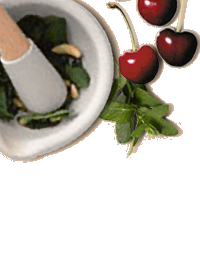

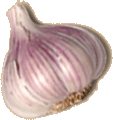
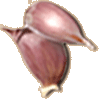
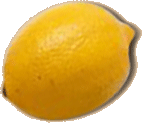
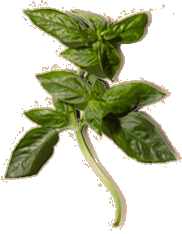
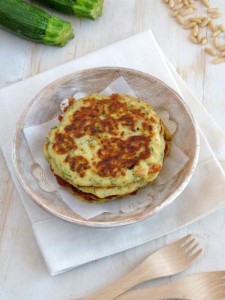

leave a comment